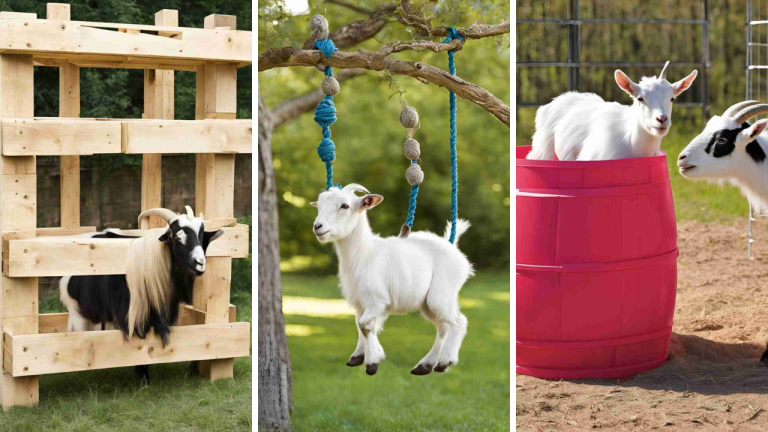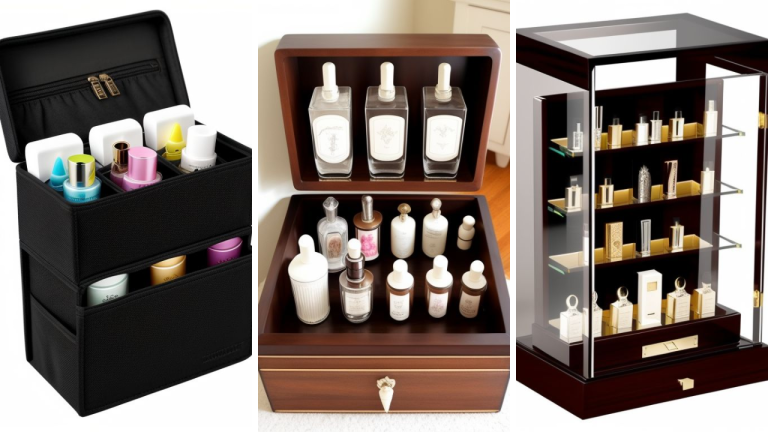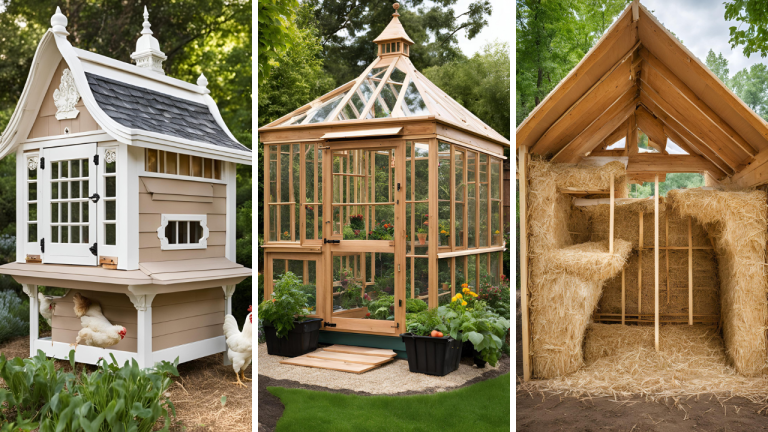Creating a comfortable and functional chicken coop for your flock is crucial for their health and well-being. A well-designed coop not only helps keep chickens safe from predators but also provides them with an environment that encourages natural behaviors and easy access to food and water. In this blog post, we’ve rounded up 23 inside chicken coop ideas that will help you design the perfect space for your chickens. Whether you’re raising hens for eggs, meat, or as pets, these ideas will ensure your flock thrives in a clean and secure environment.
1. Elevated Roosting Bars

Roosting bars are essential for chickens to sleep comfortably off the ground. An elevated roosting bar allows chickens to perch safely, away from predators and pests, and prevents them from sleeping in their food or bedding. For a simple design, install wooden dowels or branches at varying heights. Chickens will enjoy hopping from one bar to another, mimicking their natural roosting habits.
Ensure the bars are spaced 6 to 12 inches apart and placed high enough for chickens to stretch their wings and settle comfortably. If you have multiple chickens, consider adding extra bars or creating tiered levels for more space.
2. Nesting Boxes with Removable Trays
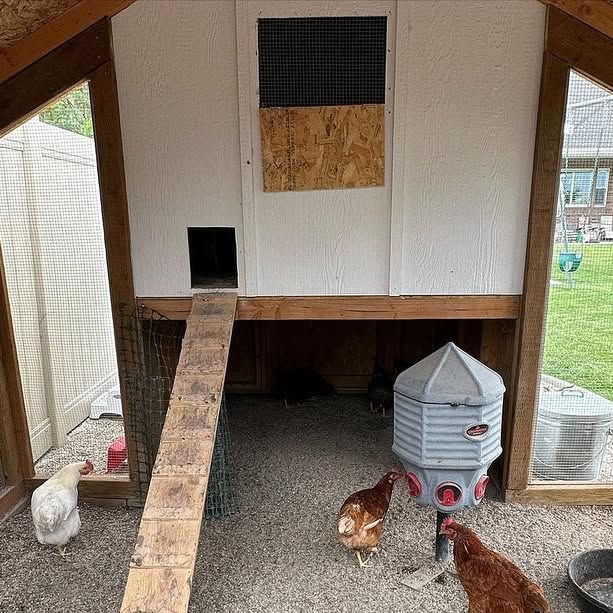
Nesting boxes provide a private space for hens to lay eggs, and a removable tray underneath makes cleaning easy. Choose nesting boxes that are the right size for your hens—generally, a 12”x12” box is perfect. Add straw or hay to create a soft and inviting space for your chickens.
A removable tray underneath the nesting box will catch any waste or egg debris, making it simple to remove and clean. This will help maintain a hygienic environment inside your chicken coop and reduce the chance of bacteria build-up that could harm your chickens.
3. Chicken Coop With Ventilation Windows
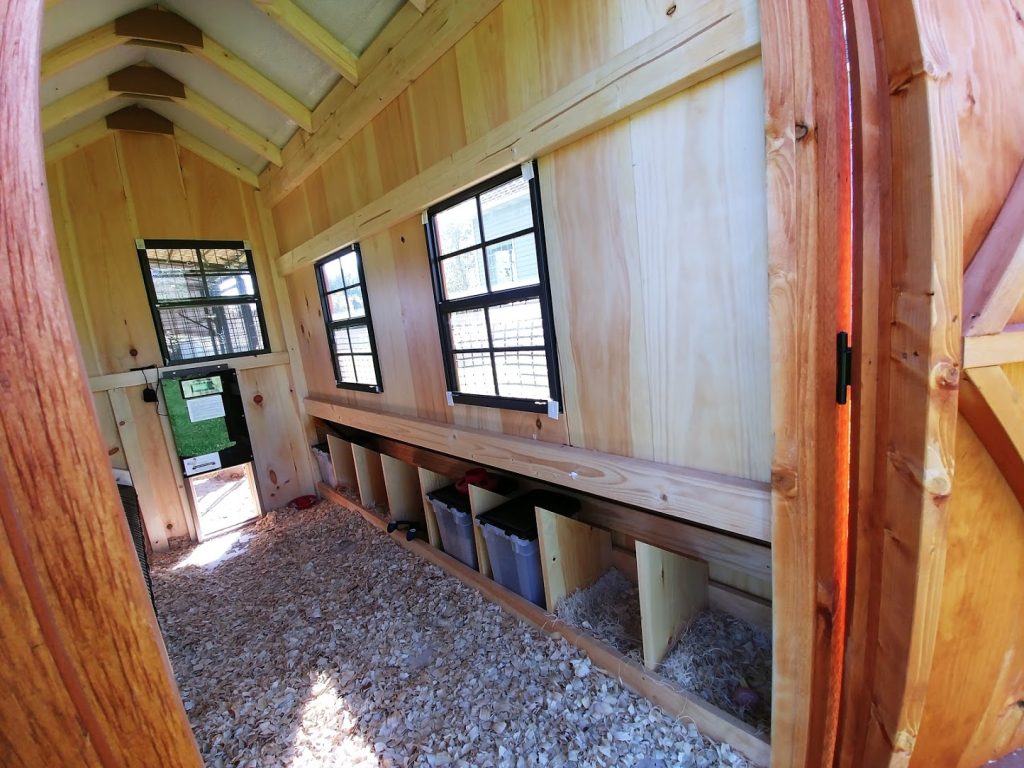
Proper ventilation is crucial in a chicken coop to avoid heat buildup and moisture accumulation, both of which can cause health problems. Installing ventilation windows that can be opened and closed will allow for better airflow, keeping the space fresh and dry.
Place windows near the top of the coop to allow warm air to rise and escape. Be sure to include shutters or covers to protect your chickens from rain or extreme cold. The ventilation should be adjustable to help control the airflow depending on the weather.
4. Chicken Coop with Storage Space
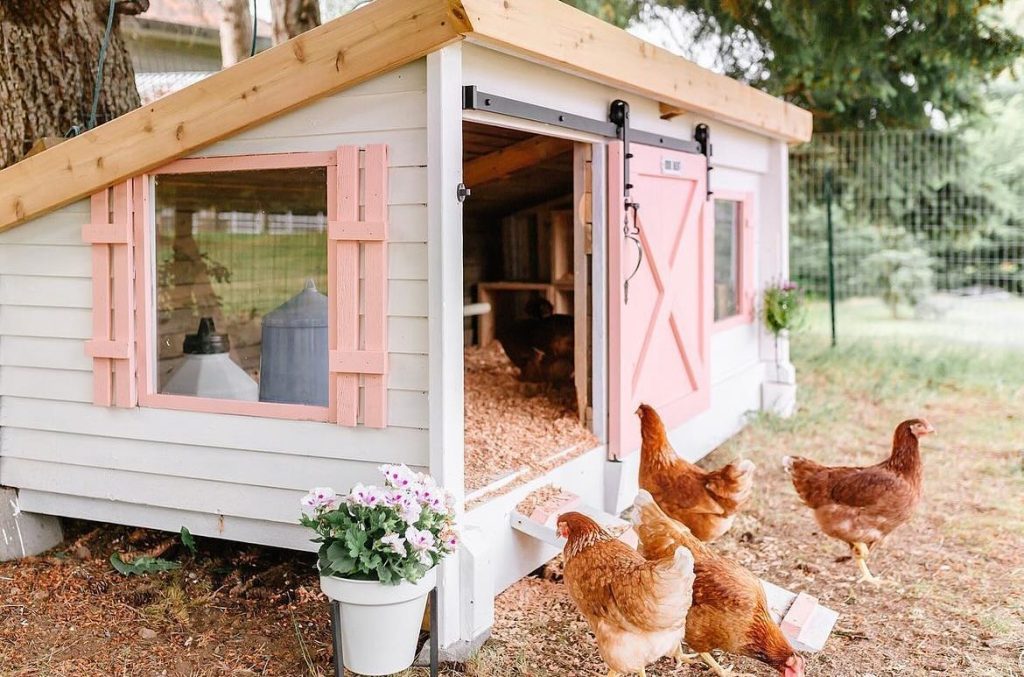
An inside chicken coop design that includes storage for feed, bedding, and other supplies is a practical and space-efficient idea. Designate a separate area or shelving unit for storage to keep everything organized. This prevents clutter inside the coop and makes it easier to access food and supplies during feeding time.
Consider using stackable containers to store grains, mealworms, and other chicken food items. Keep a separate section for cleaning supplies, gloves, and tools for coop maintenance.
5. Automatic Watering System
Source
Keeping your chickens hydrated is essential, but constantly refilling water containers can become time-consuming. An automatic watering system can save time and ensure that your chickens always have access to clean water. These systems work by using water lines connected to a reservoir or water tank, which automatically refill the containers as your chickens drink.
Look for an easy-to-install system with water nipples or cups, which minimize water waste and ensure a clean water source for your chickens.
6. Rubber Flooring for Easy Cleanup
Source
Rubber flooring is a fantastic addition to a chicken coop, especially for those who want to simplify cleaning. Rubber mats or tiles are easy to clean and disinfect, unlike wood or dirt floors. They also provide a comfortable, non-slip surface for your chickens to walk on.
The mats can be removed for cleaning and then replaced easily, ensuring the coop stays hygienic and odor-free. This flooring also provides a cushion for your chickens, reducing the chance of injury from hard surfaces.
7. Insulated Coop for Cold Weather
Source
In regions with cold winters, an insulated chicken coop will keep your chickens warm and comfortable. Insulation helps to maintain a steady temperature inside the coop, preventing frostbite on their combs and wattles.
Consider using foam board or reflective insulation material for the walls and roof. Be sure to leave some ventilation options, even in winter, to reduce moisture buildup. In cold climates, heated water bowls and an insulated roof can also help prevent freezing.
8. Chicken Coop with Scratching Area
Source
Chickens love to scratch and peck at the ground, so creating a designated scratching area inside the coop is a great way to keep them entertained and active. Fill a section of the floor with sand, dirt, or wood chips, allowing chickens to dig and forage naturally.
You can also add natural elements like logs or branches for added enrichment. This will help your chickens express their instincts and improve their overall health.
9. Chicken Coop With Adjustable Perches
Source
Chickens like to perch at different heights, depending on their mood and social structure. Adjustable perches are a great addition to any coop, allowing you to change the height as needed. These perches can be made from dowels, branches, or sturdy wood beams.
By adjusting the height of the perches, you give your chickens the option to choose their favorite spot. Some chickens prefer to roost higher up, while others like to stay closer to the ground. This feature makes it easier to accommodate a variety of chickens with different preferences.
10. Chicken Coop With a Dust Bath Area
Source
Dust baths are a natural way for chickens to clean themselves and keep parasites at bay. Adding a dust bath area inside your chicken coop will allow your chickens to indulge in this essential behavior. A dust bath is typically made from a mix of sand, dirt, and diatomaceous earth.
You can place the dust bath in a corner of the coop, filling it with a few inches of dusting material. Chickens will enjoy rolling around and dusting themselves to remove mites, lice, and other parasites. Just be sure to keep it clean and add fresh material as needed.
11. Chicken Coop with LED Lighting
Source
If you live in a location with long winters or short daylight hours, LED lighting inside your chicken coop can help regulate the chickens’ laying cycle. Lighting can encourage hens to lay eggs even when daylight is limited.
Choose low-energy LED lights that mimic natural daylight, and install a timer to turn the lights on and off at regular intervals. This will not only help with egg production but also ensure your chickens feel comfortable and safe in the coop during nighttime.
12. Chicken Coop with Enclosed Run
Source
Creating an enclosed run for your chickens allows them to safely explore outside without worrying about predators. The run can be attached to the coop, providing chickens with additional space to forage and roam while being protected by a wire fence.
Make sure the run has both shaded and sunny spots so chickens can choose their preferred environment. Also, make sure the fencing is secure and tall enough to prevent predators like foxes or raccoons from entering.
13. Chicken Coop with a Mobile Design
Source
A mobile chicken coop, also known as a “chicken tractor,” can be moved around your yard to give your chickens fresh ground to scratch and forage. This is a fantastic idea for people with limited space or for those who want to rotate their chickens’ environment.
A mobile coop should be lightweight, easy to move, and secure enough to protect the chickens from predators. Consider building one with wheels or using a small trailer design for easy mobility.
14. Chicken Coop with Natural Lighting
Source
Natural light is essential for chickens as it helps regulate their circadian rhythms and encourages egg-laying. A well-lit coop with windows or skylights allows natural sunlight to flood the space during the day, which not only boosts the chickens’ mood but also keeps the coop feeling bright and airy.
Incorporating clear panels or glass in the roof or walls can provide the much-needed sunlight during the morning and afternoon hours. Make sure that the windows have covers for colder months to protect your chickens from the elements, but during warmer months, having open windows can keep the coop fresh and ventilated.
15. Chicken Coop with a Walk-in Design
Source
A walk-in chicken coop design offers more convenience and ease of maintenance. Having enough headroom to walk inside the coop allows you to clean, collect eggs, and monitor your chickens without bending over or crawling. This setup is particularly useful for those who care for a larger flock.
Design your walk-in coop with wide doors for easy access, and consider adding shelving or hooks to store tools. A spacious walk-in coop provides plenty of room for your chickens to roam, giving them more freedom to spread out.
16. Chicken Coop with PVC Pipe Feeders
Source
PVC pipe feeders are an excellent solution for dispensing chicken food in a way that reduces waste and mess. These systems are easy to build and can be customized to fit your coop’s layout. By attaching PVC pipes vertically or horizontally, you can create a gravity-fed system that releases food as your chickens need it.
PVC pipe feeders help keep feed off the ground, preventing contamination from feces or bedding. Plus, they keep your chickens from wasting food by scattering it around the coop. This setup also helps prevent pests like rats from stealing the food.
17. Chicken Coop with a Built-In Cleaning System
Source
Efficient cleaning systems are key to maintaining a healthy chicken coop. A built-in cleaning system, such as a slatted floor with a tray underneath, allows you to easily remove waste and bedding without disturbing the chickens too much.
Slatted floors keep the droppings separated from the bedding and make it easy to sweep out the collected waste. Installing a cleaning tray underneath is a quick way to keep the coop fresh, and this system can be customized to suit your coop’s size and your needs.
18. Chicken Coop with Indoor Plants
Source
Adding indoor plants to your chicken coop can improve air quality and create a more natural environment for your chickens. Choose plants that are safe for chickens, such as spider plants, aloe vera, or lavender. These plants can help with air filtration and provide a calming aesthetic.
If you have an indoor coop with windows, plant vines or hanging plants near the windows to add greenery. Be sure the plants are not toxic to chickens, and trim them regularly to prevent overgrowth. Additionally, plants can help attract beneficial insects, offering your chickens natural snacks!
19. Chicken Coop with Rotating Bedding System
Source
A rotating bedding system is an innovative way to keep your chicken coop clean and odor-free. This system allows you to rotate fresh bedding material, so the old bedding is automatically moved to a composting area or removed. By incorporating a rotating platform or tray, you can easily replace bedding with minimal effort.
This type of system helps reduce the frequency of deep cleans and promotes better waste management in the coop. It also makes it easier to manage the composting process and recycle the used bedding into your garden.
20. Chicken Coop with an Automatic Egg Collection System
Source
An automatic egg collection system is an excellent feature for those who have a large flock and want to simplify egg retrieval. These systems are designed to transport eggs from the nesting boxes to a collection tray or bucket outside the coop, so you don’t have to go inside to gather them.
By installing a simple conveyor belt or gravity-fed system, you can create a streamlined and efficient way to collect eggs without disturbing your chickens. This is particularly useful in larger coops or for people who are unable to visit their chickens regularly.
21. Chicken Coop with Chicken-Friendly Flooring
Source
Chickens are known to spend a lot of time on the floor of the coop, so choosing the right flooring is crucial. Opt for flooring materials that are easy to clean, non-toxic, and comfortable for your chickens. Some popular options include wood shavings, straw, sand, or rubber mats.
Rubber mats or interlocking tiles can provide a cushioned surface that’s gentle on your chickens’ feet and easy to clean. If you prefer natural materials, sand works well to keep the coop dry and easy to manage. Be sure to layer the bedding with enough depth for the chickens to scratch and forage comfortably.
22. Chicken Coop with Overhead Nesting Boxes
Source
Overhead nesting boxes are a great space-saving solution for smaller coops. Installing these boxes on the upper level of the coop allows the chickens to access them easily, while saving valuable floor space for scratching and roosting.
These boxes can be accessed from inside the coop and typically have a small ramp or ladder for chickens to climb up to them. For better hygiene, place a removable tray under the nesting boxes to catch any eggs or waste.
23. Chicken Coop with Built-in Manure Composting Area
Source
A manure composting area built into the coop design is a fantastic way to manage waste and create nutrient-rich compost for your garden. By separating the waste area from the rest of the coop, you can easily collect droppings and bedding to start the composting process.
Consider adding a simple container or bin under the floor of the coop where manure can be placed and left to decompose. This can be a sustainable option for managing chicken waste while providing an eco-friendly solution to fertilizing your garden.
Conclusion
Designing a functional and comfortable inside chicken coop requires careful consideration of both your chickens’ needs and your own convenience. By integrating ideas like elevated roosting bars, removable trays, automatic watering systems, and mobile designs, you can create a space that promotes health, comfort, and ease of maintenance.
Whether you’re looking to improve your coop with better ventilation, add storage for supplies, or provide your chickens with a more natural living environment, these 23 ideas offer a variety of solutions to suit different flock sizes, spaces, and climates. From practical solutions like cleaning systems and composting areas to fun features like dust baths and indoor plants, there’s no shortage of ways to optimize your chicken coop.
A well-thought-out coop will not only improve the quality of life for your chickens but will also make your life as a chicken keeper much easier. With a little creativity and planning, you can build a chicken coop that’s both functional and a joy to manage. Happy chicken keeping!
